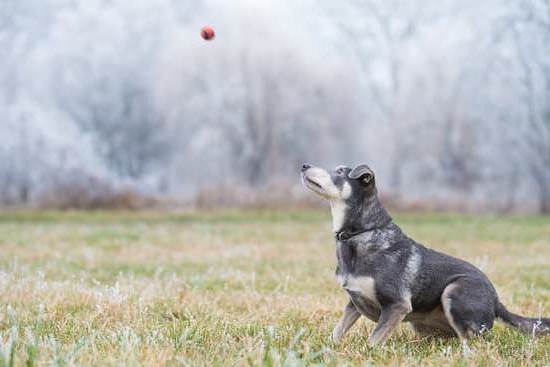Crate training can be an effective and beneficial tool for dog owners, but it can also be a source of stress and anxiety for some dogs. In this article, we will explore the process of crate training and provide valuable insights to help you understand how to successfully train your dog without them freaking out.
One of the most important things to consider when crate training your dog is understanding the benefits behind it. Crate training provides a safe and comfortable space for your dog while also aiding in house training, preventing destructive behaviors, and offering a sense of security for your pet. However, many dog owners may encounter challenges when attempting to introduce their furry friend to the crate.
There are several common reasons why a dog may freak out in a crate, from feeling trapped and anxious to having negative associations with confinement. Understanding these reasons is crucial in addressing your dog’s concerns and making the crate a positive space for them. Additionally, choosing the right crate for your dog and introducing it in a positive way are essential steps toward successful crate training.
Common Reasons Why a Dog May Freak Out in a Crate
When crate training a dog, it is not uncommon for them to exhibit signs of fear or anxiety when placed in the crate. Understanding the common reasons why a dog may freak out in a crate can help you address and manage their behavior, ultimately leading to successful crate training.
Feeling Confined
Dogs are naturally active and curious animals, and being confined in a small space can cause them to feel anxious. This is especially true for dogs that have not been properly introduced to the crate or those that have had negative experiences with confinement in the past. It is important to understand that this behavior is not a reflection of disobedience, but rather a response to feeling restricted.
Separation Anxiety
Many dogs experience separation anxiety when they are left alone, and being confined in a crate can exacerbate this feeling. Dogs with separation anxiety may exhibit behaviors such as excessive barking, whining, or destructive chewing when placed in the crate. It is important to differentiate between normal mild distress at being left alone versus severe anxiety which will need professional intervention.
Past Traumatic Experiences
If a dog has had negative experiences with confinement, such as being locked in a crate for long periods without proper introduction or training, they may develop a fear of crates. This fear can manifest as attempts to escape the crate, vocalization, or refusal to enter the crate altogether. Understanding your dog’s past experiences and working patiently to counter-condition their fear is crucial in helping them feel comfortable in the crate.
Tips for Choosing the Right Crate for Your Dog
When it comes to crate training your dog, choosing the right crate is crucial for their comfort and wellbeing. Here are some tips for selecting the perfect crate for your furry friend:
- Consider the size: It’s important to choose a crate that allows your dog to stand up, turn around, and lie down comfortably. Measure your dog from the tip of their nose to the base of their tail, and from the top of their head to the ground to ensure you get the right size.
- Choose the right type: There are different types of crates available, including wire crates, plastic crates, and soft-sided crates. Consider your dog’s needs and preferences when selecting the type of crate. For example, some dogs may prefer a more enclosed space while others may feel more comfortable in a wire crate with better airflow.
- Think about durability: A sturdy and durable crate is essential, especially if you have a strong or active dog. Look for a crate that is well-constructed and able to withstand chewing or scratching.
By taking these tips into consideration when choosing a crate for your dog, you can ensure that they have a safe and comfortable space to call their own during the crate training process. Remember, the goal is to make the crate a positive and inviting space for your dog, so investing time in selecting the right one is worth it in the long run.
The Importance of Introducing the Crate to Your Dog in a Positive Way
Introducing a crate to your dog in a positive way is crucial for successful crate training. The introduction sets the tone for how your dog will feel about the crate and can significantly impact their behavior while inside it. One of the main benefits of introducing the crate in a positive way is that it helps to create a safe and comfortable space for your dog, where they can relax and feel secure.
When introducing the crate to your dog, it’s important to associate it with positive experiences. Start by placing the crate in an area where your dog spends time, such as the living room or kitchen. You can encourage them to explore the crate by placing treats, toys, or bedding inside.
It’s important not to force your dog into the crate but instead allow them to explore it at their own pace. Positive reinforcement through treats and praise can also help create a positive association with the crate.
Another effective way to introduce the crate positively is by feeding your dog their meals inside it. Start by leaving the door open while they eat, gradually closing the door for short periods as they become more comfortable.
This helps them see the crate as a place where good things happen. By taking these small steps and being patient, you can help your dog form a positive association with their crate and reduce any fear or anxiety they may have towards it.
Step-by-Step Guide to Crate Training Your Dog Without Them Freaking Out
Crate training can be a beneficial and effective way to provide your dog with a safe and secure space of their own. It serves as a tool for house training, helps prevent destructive behavior, and can offer comfort to dogs with anxiety. Here is a step-by-step guide to crate training your dog without them freaking out:
1. **Choose the Right Crate:** Select a crate that is big enough for your dog to stand up, turn around, and lie down comfortably. A crate that is too big may not provide the security that dogs seek in their dens, while a crate that is too small can cause discomfort.
2. **Introduce the Crate Positively:** Place the crate in an area where your dog spends time, such as the living room or bedroom. Make the crate inviting by placing soft bedding inside and leaving the door open. Encourage your dog to explore the crate on their own by tossing treats inside or placing their favorite toys within.
3. **Feed Meals in the Crate:** Gradually introduce your dog to the idea of spending time in the crate by feeding them their meals inside it. Start by placing their food near the entrance of the crate and gradually move it further inside over several days.
4. **Use Positive Reinforcement:** Whenever your dog voluntarily enters the crate, offer praise and treats to create positive associations with being inside. Avoid forcing or coercing your dog into the crate, as this can cause stress and fear.
5. **Increase Time Spent in the Crate:** Once your dog is comfortable entering and exiting the crate on their own, start slowly closing and latching the door for short periods while you are at home. Gradually increase these periods of confinement while you are nearby until they are comfortable being crated for longer durations.
By following these steps patiently and consistently, you can successfully crate train your dog without causing them stress or anxiety in their new den-like space.
Understanding the Signs of Stress or Anxiety in Your Dog During Crate Training
Crate training can be a useful tool for dog owners, but it is essential to understand the signs of stress or anxiety in your dog during this process. One common sign of distress is excessive barking, whining, or howling when the dog is left alone in the crate.
Other signs may include destructive behavior such as scratching or chewing at the crate, drooling, panting, pacing, and attempts to escape from the crate. It’s important to recognize these signs early on to address any issues your dog may be experiencing.
Another indicator of stress or anxiety in dogs during crate training is changes in their body language. This can include trembling, cowering, tucked tail, dilated pupils, and avoiding eye contact. Some dogs may also show signs of aggression when feeling stressed in their crates. Understanding these physical and behavioral cues can help you identify when your dog is struggling with crate training.
As a pet owner going through this process, it’s crucial to be patient and observant when introducing your dog to crate training. Paying attention to your dog’s reactions and behavior will enable you to address any concerns promptly. It’s also beneficial to consult with a professional trainer or behaviorist if you’re having difficulty managing your dog’s stress or anxiety during crate training.
| Signs of Stress and Anxiety | Behavioral Cues |
|---|---|
| Excessive barking, whining or howling | Trembling, cowering |
| Destructive behavior (scratching/chewing) | Tucked tail |
| Drooling, panting, pacing | Dilated pupils |
| Attempts to escape from the crate | Avoiding eye contact |
How to Address and Manage a Dog’s Fear or Anxiety in the Crate
Recognizing Signs of Stress or Anxiety
When crate training your dog, it’s important to be able to recognize the signs of stress or anxiety in your pet. Some common signs include excessive whining or barking, pacing, panting, and attempting to escape the crate.
Your dog may also display fearful body language such as tail tucking, ears pinned back, or avoidance behaviors. By being able to identify these signs, you can take steps to address your dog’s fear or anxiety in the crate before it becomes a bigger issue.
Positive Reinforcement and Desensitization
One effective way to address and manage a dog’s fear or anxiety in the crate is through positive reinforcement and desensitization techniques. Start by creating a positive association with the crate by offering treats and praise when your dog willingly enters the crate. Gradually increase the amount of time your dog spends in the crate while providing positive reinforcement. This process helps desensitize your dog to being in the crate and reduces their fear or anxiety over time.
Seeking Professional Help
If your dog continues to exhibit fear or anxiety in the crate despite your best efforts, it may be beneficial to seek professional help from a certified dog trainer or behaviorist. They can assess your dog’s specific issues and provide personalized guidance on how to address and manage their fear or anxiety in the crate.
A professional can also offer additional training techniques and support that may be necessary for effectively resolving your dog’s issues with crate training. It’s important not to ignore persistent fear or anxiety in your dog, as it can lead to long-term behavioral problems if left unaddressed.
Troubleshooting Common Issues During Crate Training and How to Overcome Them
In conclusion, crate training can be an effective and beneficial way to provide security and a safe space for your dog. However, it is common for dogs to freak out in the crate, especially during the initial stages of training. Understanding the reasons behind this behavior, such as fear, anxiety, or discomfort, is crucial in addressing and managing these issues.
Choosing the right crate for your dog is important in ensuring their comfort and safety. Whether it’s a wire crate, plastic crate, or even a soft-sided crate, it’s essential to consider your dog’s size and preferences when making this decision. Introducing the crate to your dog in a positive way, along with gradual and patient training, can help alleviate their fear or anxiety.
Furthermore, recognizing the signs of stress or anxiety in your dog during crate training is vital. Panting excessively, whining, pacing, or showing physical signs of distress are all indicators that may require adjustments in your training approach. By addressing these issues and using positive reinforcement techniques, you can help your dog associate the crate with safety and security.
Lastly, troubleshooting common issues during crate training is part of the process. Whether it’s difficulty with confinement, separation anxiety, or other behavioral challenges, patience and consistency are key. Seeking professional guidance from a veterinarian or certified dog trainer can also be beneficial in overcoming these obstacles. Ultimately, with the right approach and understanding of your individual dog’s needs and behaviors, you can successfully crate train your dog without them freaking out.
Frequently Asked Questions
How Do You Crate Train a High Anxiety Dog?
Crate training a high anxiety dog requires patience, consistency, and positive reinforcement. Start by making the crate a comfortable space with bedding, toys, and treats.
Encourage your dog to explore the crate at their own pace and reward them for any signs of calm behavior near or inside the crate. Gradually increase the time they spend in the crate, always ensuring it’s a positive experience for them.
How Do You Get an Unwilling Dog Into a Crate?
Getting an unwilling dog into a crate involves using positive reinforcement and desensitization techniques. Start by making the crate inviting with their favorite toys and treats. Encourage them to enter the crate voluntarily and reward them when they do so.
Avoid forcing or shoving your dog into the crate, as this can create negative associations with it. Patience and consistency are key to helping an unwilling dog become comfortable with using a crate.
Should I Ignore My Dog Crying During Crate Training?
When crate training, it’s important to address your dog’s crying in a way that doesn’t reinforce their anxious behavior. It can be challenging to hear your dog cry, but it’s essential to avoid rewarding them by letting them out of the crate when they’re vocalizing.
Instead, wait for periods of quiet before opening the door to let them out. Additionally, make sure that any time spent in the crate is associated with positive experiences such as treats, toys, or relaxation to help reduce anxiety-related crying behaviors over time.

Welcome to the blog! I am a professional dog trainer and have been working with dogs for many years. In this blog, I will be discussing various topics related to dog training, including tips, tricks, and advice. I hope you find this information helpful and informative. Thanks for reading!





